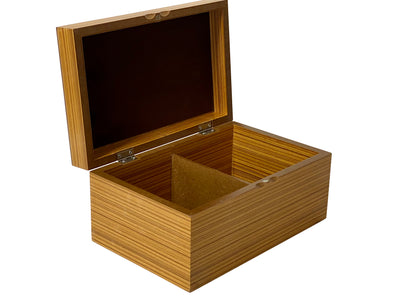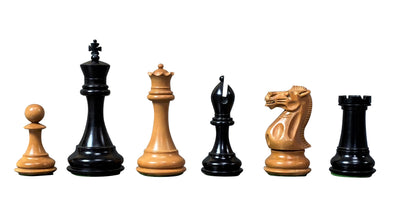Unlock Your Game: How to Choose the Right Chess Set for Beginners
Choosing the right chess set can make all the difference in your journey to mastering this timeless game. For beginners, it's crucial to select a set that not only facilitates learning but also enhances the overall playing experience. In this guide, we will explore various aspects of choosing a chess set, including material types, design features, size considerations, and other factors that can elevate your game from the start. Plus, we'll delve into the value of a tournament chess board, which can serve as an excellent learning tool and investment. So, let's dive in!
Understanding Chess Set Components
Before you dive into purchasing your chess set, it’s important to know the fundamental components that come with it. A standard chess set typically includes:
- Chess Pieces: Every set consists of 32 pieces, divided into two contrasting colours, usually black and white.
- Chessboard: The board is a crucial aspect of the set; it often determines the overall playing aesthetic and usability.
- Storage: Many sets come with a designated box or storage solution for keeping the pieces safe and organized.
The Importance of Material Quality
The first aspect to consider when selecting your chess set is the material used to craft both the pieces and the board. Here are some common materials, along with their pros and cons:
Wooden Chess Sets
Wooden chess sets are classic and revered for their aesthetic appeal and durability. They often come in various finishes and types of wood, such as:
- Sheesham: Known for its beautiful grain and density, this wood is commonly used in handcrafted wooden chess sets.
- Birch: A lighter wood, birch chess sets are often more affordable and still retain a nice appearance.
- Plastic: While often seen as less elegant than wooden sets, plastic chess sets are budget-friendly and durable, making them great for beginners.
Ceramic and Glass Chess Sets
If you want something visually striking, consider ceramic or glass chess sets. While they can function as decorative pieces, they may not be the best choice for heavy play or learning purposes due to their fragility.
Choosing the Right Size
The size of your chess pieces and board is another essential aspect. Many beginners may underestimate how size affects gameplay. Here’s a quick guide to help you choose the right size:
- Standard Tournament Size: The most common size is based on a king height of around 3.75 inches, which suits a chessboard with 2 to 2.5-inch squares.
- Compact Sets: For portability or smaller spaces, you might consider compact sets, usually featuring smaller pieces and a smaller board.
Design and Aesthetic Appeal
While functionality is crucial, the visual appeal of your chess set can enhance your enjoyment. Consider the following factors:
Style
Chess sets are available in numerous styles, from classic Staunton designs to thematic sets featuring characters from movies, history, or literature. A tournament chess board is typically designed in the Staunton style for standardisation in competitive play.
Finish
The finish of the pieces and board can also affect your experience. Glossy finishes are popular, but a matte finish may provide better grip and prevent sliding.
Evaluating Price Range
Your budget plays a significant role in your decision-making. Chess sets are available at various price points; you don’t need to break the bank to find a quality set. Here’s a breakdown of what you might expect within different price ranges:
- Entry-Level Sets (£20 - £50): Usually plastic or basic wood, these can serve well for beginners.
- Mid-Range Sets (£50 - £150): You can find good quality wooden or metal sets that provide an excellent balance between price and craftsmanship.
- High-End Sets (£150+): These are often collectibles or handcrafted pieces, suitable for serious players.
Understanding Weight and Stability
The weight of your pieces can affect gameplay, especially for beginners. Lighter pieces may easily be knocked over, while heavier pieces can feel more substantial and satisfying to move. A tournament chess board often features heavier pieces to withstand competitive play. Make sure to consider the following aspects:
- Base Weight: Look for pieces with a weighted base to prevent tipping.
- Material Density: Denser materials, like weighted plastic or solid wood, can enhance stability during play.
Functional Features for Better Learning
Many chess sets include functional features that can aid in your learning process:
Notation
A board that includes algebraic notation can help you familiarise yourself with chess terms and notation as you learn common openings and strategies.
Visual Aids
Some sets come with visual aids, such as built-in instruction boards or guides integrated into the packaging, which can offer additional support for beginners.
Choosing the Right Tournament Chess Board
Investing in a tournament chess board can be a smart move for those looking to take their skills to the next level. Not only is it a standard for competitive play, but it also offers several advantages:
- Durability: Most tournament boards are built to withstand frequent use, making them perfect for both practice and competition.
- Standardisation: Playing on a tournament board helps you get accustomed to the expected environment of competitive play.
- Quality: Tournament boards are typically made from high-quality materials designed to fatigue gracefully, ensuring they last a long time.
Exploring Different Chess Variants
As a beginner, you may find interest beyond the classical format. Space permits a host of chess variants, including:
- Rapid Chess: This version promotes quicker decision-making, often leading to lively and exciting games.
- 960 Chess (Fischer Random): The pieces are arranged randomly, eliminating rote memorization of openings.
Consider these when selecting your chess set; some specialty sets cater specifically to variant play, enhancing both the novelty and educational aspect.
Maintaining and Caring for Your Chess Set
Once you’ve chosen the right chess set, knowing how to care for it is vital for longevity. Here are some maintenance tips:
- Cleaning: Regularly dust your pieces and board with a soft cloth. Avoid harsh chemicals that may damage finishes.
- Storage: Always store your chess pieces in a cool, dry place and pack them away in their dedicated box after use.
- Regular Play: The more you play, the more comfortable you will become. Natural wear is part of the process!
The Journey to Mastery Starts Here!
Choosing the right chess set as a beginner is not just about the immediate playing experience—it's about laying the foundation for your chess journey. Finding a well-crafted tournament chess board or a visually appealing set can make your learning process enjoyable and inspiring. By considering factors such as material, size, quality, features, and even pricing, you will be better equipped to make an informed decision.
Remember, every great player starts somewhere. So take your time, explore your options, and make a choice that resonates with you. With the right tools, you will not only learn the strategies of the game but also develop a deep love for it that may last a lifetime. Get ready to unlock your game and embark on an exciting journey into the world of chess!









